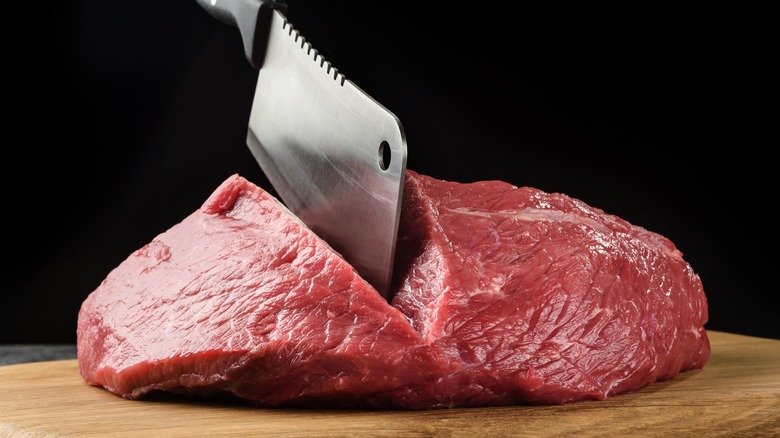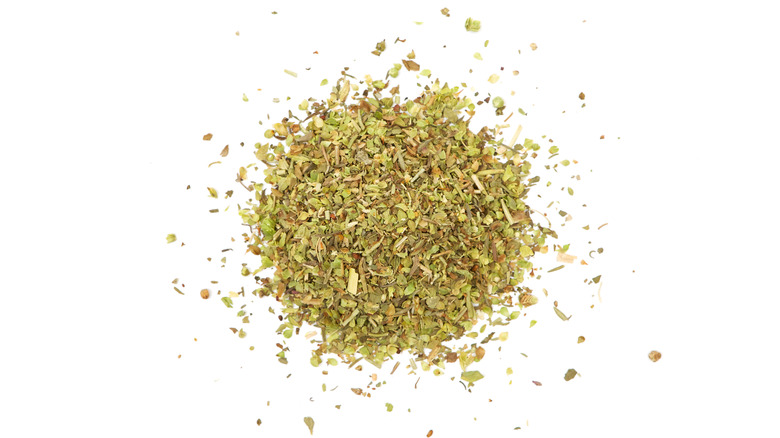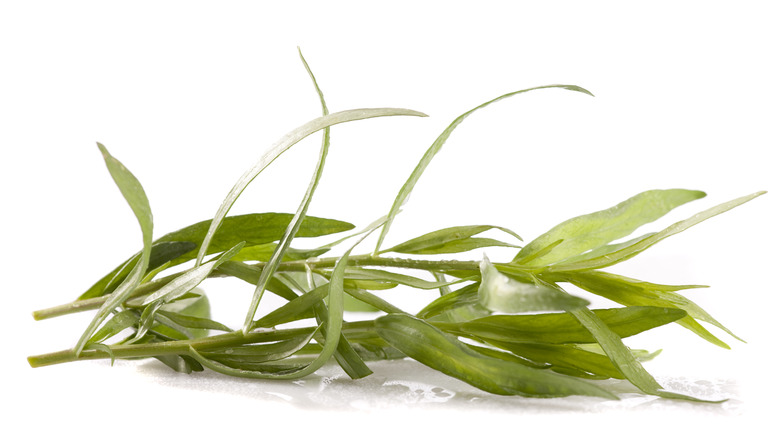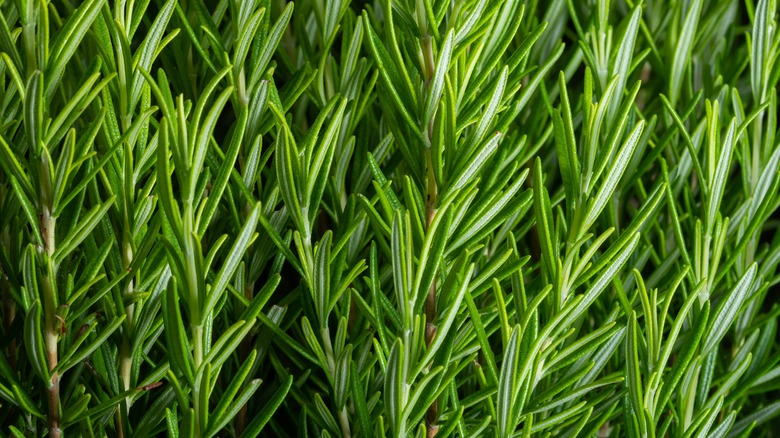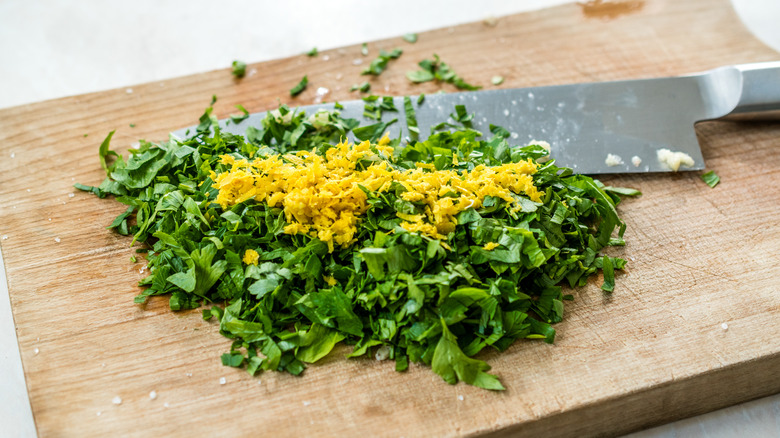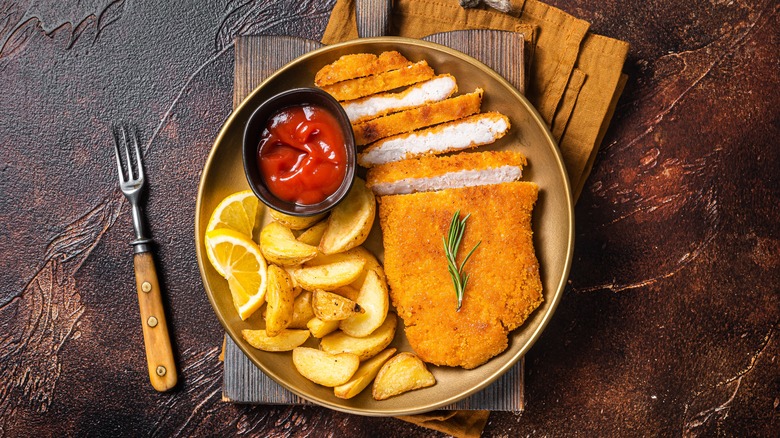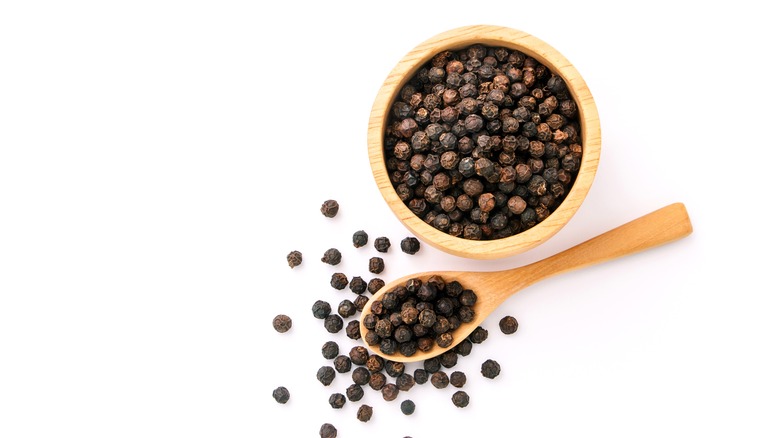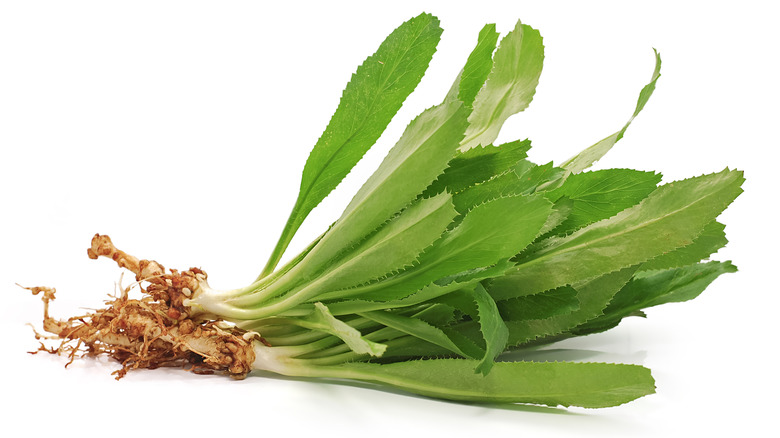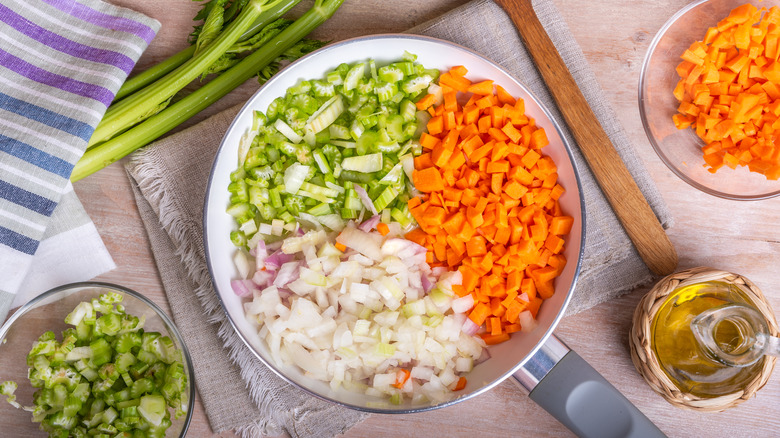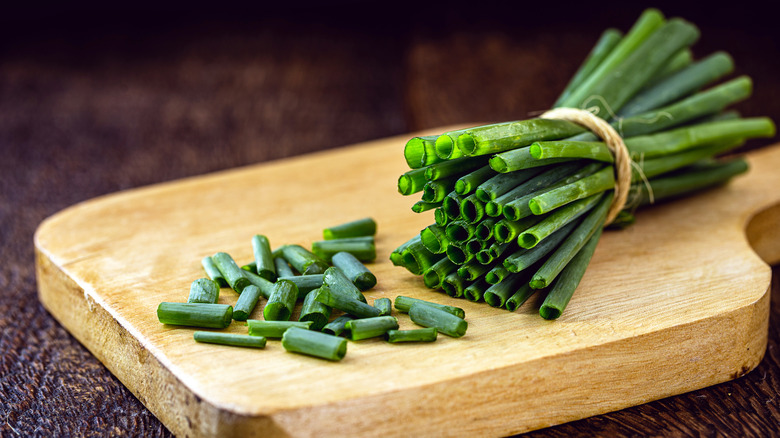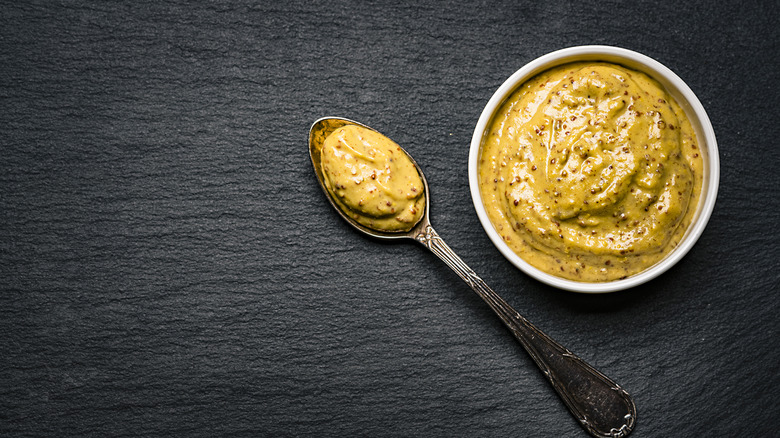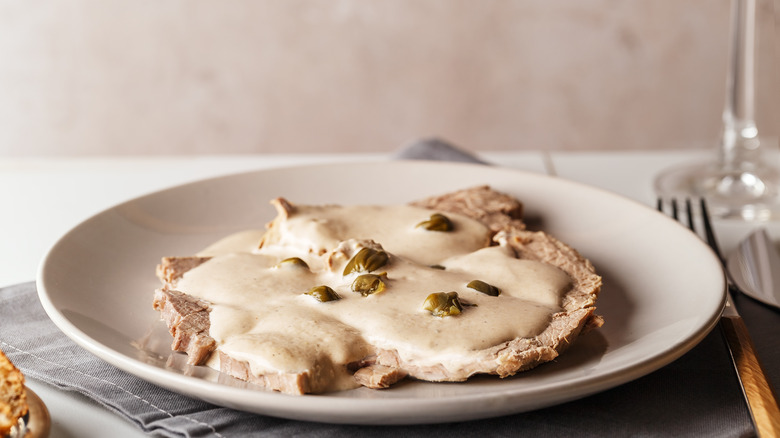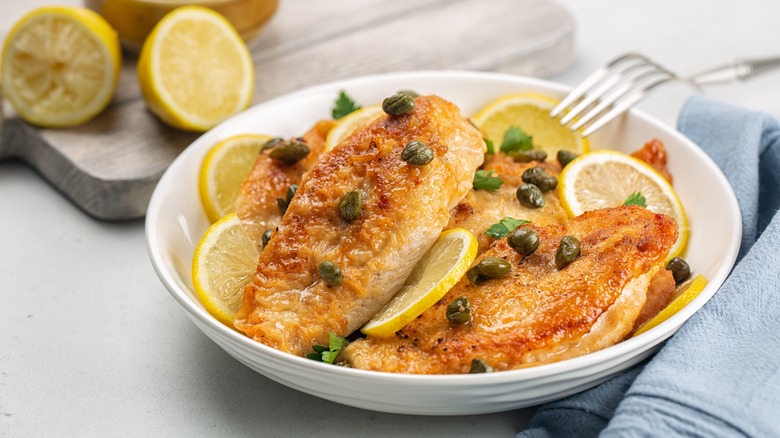The 13 Best Seasonings To Flavor Veal
Veal hasn't always scored high marks on the scale of humanely raised meat. There was a time when veal was synonymous with animal cruelty, in large part due to removing the calves from their mothers at birth and the small crates in which they were held –- these were designed to ensure the calf remained as still as possible so that it wouldn't build muscle and make the meat tougher. However, in many states, this practice has been banned, while it's possible to now purchase the meat of calves that have been milk and grass-fed, though this veal can be expensive. In short, the welfare of calves has vastly improved since the dark days of the 1980s, when the problem came to a head, but since there are no guarantees every farmer has gotten with the program, it's important to check up on the source of your veal to make sure it was raised as humanely as possible, making it perfectly ok to eat veal.
This makes it possible to return to veal with a clear conscience as well as a more satisfied palate. In fact, as it stands to reason, calves that have lived happier lives and been given healthier feed are more likely to produce better-tasting meat, and we all know how important it is to use high-quality prime ingredients when cooking up any recipe. So, let's take a look at how this newly improved meat can be further enhanced in flavor and texture.
Italian seasoning
Chicken parmesan is an all-around favorite dish, but if you use veal instead of chicken, you'll be taking the recipe to new heights. Luckily, we have just the recipe: a crispy baked veal Parmesan, where the Italian seasonings within it exalt the veal in the most delicious way. The Parmesan certainly doesn't hurt, either.
To prepare this, coat your veal cutlets in beaten eggs, flour, cornflakes, panko bread crumbs, and Parmesan, along with dried basil and garlic powder seasoning, before baking them for 10 minutes at 500 degrees Fahrenheit. Meanwhile, combine your can of tomatoes with more garlic powder, dried basil, salt, sugar, and onion powder. Cook the mixture, spread it across the bottom of a baking dish, and place the veal cutlets on top, along with some more Parmesan, sauce, and some sliced mozzarella. Then bake the veal for another 10 minutes at 350 degrees Fahrenheit and finish off the dish by broiling it to brown the cheese. The steps required for this recipe can take longer than it looks, but the result is a worthy introduction to the world of veal.
Fresh tarragon
There aren't a ton of recipes that call for tarragon –- oregano, thyme, and rosemary are the usual suspects. But tarragon is just as good, and it would be a shame to neglect it and miss out on its mildly sweet flavor with hints of anise. As it happens, tarragon also goes extremely well with veal, especially in this morel and tarragon veal marsala recipe.
Start your preparations by rehydrating the morel mushrooms in beef stock and searing the veal cutlets. Then, just cook the morels in butter, Marsala wine, and the beef stock used to rehydrate the mushrooms. Once they're ready, add the tarragon, cream, and the veal cutlets. Although you can use pretty much any type of meat for this recipe, veal is especially ideal because it tends to be more tender than other meats, while beef, for example, risks turning into a chewy block of rubber in the midst of this creamy, suave sauce.
Rosemary and thyme
Rosemary and thyme go so well together that there's even a song about it, along with parsley and sage. But the fact is, they also go well with veal, though the addition of this ingredient in the old folk song lyrics might not exactly roll off the tongue.
One great recipe that expertly combines veal with rosemary and thyme is this classic Italian osso buco. The list of ingredients is lengthy, but that doesn't mean the herbs are going to get lost in the fray. They're very much an integral part of this veal dish. To make sure they stand out and to successfully recreate this meal, start by coating veal osso buco cuts in flour and browning them in a pan. Then, secure the rosemary and thyme in some cheesecloth along with bay leaves and cloves. Sauté the onions, celery, and carrot in tomato paste before adding the veal and herbs to the pot along with your vegetable stock and red wine. Make sure the veal is fully immersed in the liquid as it simmers in the pot for 4 hours. The result will be meat that you can cut with a fork, surrounded by a flavorful sauce that will seep nicely into fresh polenta. Top with butter, sugar, and grated fontina cheese for extra depth of flavor.
Gremolata
For added zing to a rich veal osso buco dish, gremolata is just the ticket. This simple topping can be made just by chopping up spring onion and basil and combining them with lemon zest. Another version works just as well with garlic and parsley instead of spring onion and basil, and in fact, this is what chef Michael Symon likes to use on his osso buco to give it a pop of freshness after it cooks in the oven for several hours, stewing in mirepoix and other tasty juices.
But to ensure the success of this dish, it's important to concentrate on the veal itself, the star of the show. The caramelization process is vital to the development of flavor in this dish, so Symon recommends thoroughly browning the meat at the beginning of the recipe in order to achieve the right effect. Similarly, he suggests not drowning the veal in juices and only allowing the liquid to come up three-quarters of the way instead of covering it completely. This helps to caramelize the meat further and make it more flavorful.
Lemon juice
You can hardly walk into an Austrian restaurant without getting hit in the face with a wiener schnitzel. The dish is incredibly simple but delicious, especially when you have a cut of good-quality veal on hand. To make it, you can follow this crispy wiener schnitzel recipe, where you'll just need to dip the veal cutlets in flour, eggs, and breadcrumbs in that order, then fry them up until golden brown.
This part alone will knock your socks off, but the real punch of flavor comes at the very end when the veal is already on your plate. At this point, you'll want to squeeze a hefty portion of lemon juice straight onto your veal cutlets. There's something about lemon juice that really brings out the flavor in certain dishes, one of them being veal. Just make sure that when choosing your veal, you go for a cut that's already pretty thin or at least one that you can easily pound into something thin. You don't want the bread crumbs to burn off before you've even managed to cook the veal through.
Freshly ground black pepper
The truth is that freshly ground black pepper is great on almost any dish, including some desserts and cocktails. So it should come as no surprise that the spice complements veal extraordinarily well. In fact, any of the recipes on this list can be improved with some freshly ground black pepper at any point in the process, but there's one recipe in particular we think rises above the rest when it comes to this spice.
Grilled Veal Chops With Chanterelle Mushroom Stroganoff just tastes better with pepper, so don't be shy about using it every time the recipe calls for it, namely when seasoning the chanterelle mushrooms and again when preparing the veal for grilling. This will help drive home the true intensity of the dish. Typically, stroganoff is made with beef, which has a stronger, less delicate flavor and texture than veal. But with this recipe, you get the benefits of delicate, subtle meat combined with the powerful flavors afforded by the pepper and other seasoning.
Culantro
You may be thinking that we say culantro, and you say cilantro; let's call the whole thing off, but actually, this is an entirely different herb. Although they have a similar flavor profile and come from the same family, they have a different appearance, with cilantro having the familiar flat leaves, like parsley, while culantro's leaves look more like spears. Crucially, though, it's important to know that culantro has a much stronger flavor, so if you're not a big fan of that sometimes "soapy" taste that comes with cilantro, you're probably not going to want to try its more zealous cousin.
But if you do want to try it, as you should, we recommend using it on veal, and in particular on this Puerto Rican veal stew, served with polenta. You can make this by marinating veal shoulder with salt, oregano, oil, garlic, and wine and adding this to a pan of sauteed onion and sofrito along with tomato paste, carrots, bay leaves, water, and the famous culantro, which makes all the difference.
Mirepoix
Cutlets or scallops seem to be among the most popular veal cuts around, but veal breast can be just as enticing if you have a good recipe for it, which we do. Although it might not be that easy to find on the grocery store shelves, you should be able to request veal breast from your butcher, with or without the bone, as you please. Alternatively, you can use this recipe with brisket if the breast is nowhere to be seen.
Once you have all your ingredients ready, start by preparing a stuffing made with butter, onion, garlic, sausage, spinach, and bread crumbs. Then it's time to prepare the meat: place the stuffing on top and fold the breast onto itself, securing it with twine, then brown it, add the mirepoix, and deglaze with a dry white wine. Finally, throw in the chicken stock and bake in the oven at 300 degrees Fahrenheit for about 2 hours.
Chives
Chives make a great garnish to many dishes –- they add a hint of freshness and a beautiful pop of color to something that might otherwise look like a rather sad and brownish lump of meat. Veal is no exception when it comes to this rule, so we pulled out a recipe to prove it.
The Daily Meal's veal scaloppine with asparagus and sweet peas (and chives) is just the ticket. Dip seasoned veal scallops in flour and brown them before topping them with your asparagus and peas cooked in butter, white wine, and chicken broth. Garnish with those chives and serve the dish with polenta or cauliflower mash. Another great way to use chives is to dry them out so that they're nice and crispy and sprinkle them right over your veal chop. You can dry them quickly enough by cooking them in the oven at 100 degrees Fahrenheit for about an hour, or do it slowly by hanging them upside down in a warm place for a week or so.
Dijon mustard
One of the beautiful things about Dijon mustard is that you can slap it on almost any protein and be done with your meal preparation in no time at all without compromising on taste. At the same time, you can add it to a range of sauces and marinades and instantly make them better. Dijon is a magical ingredient, which is why it has gained a spot on the list of best seasonings to flavor veal.
For starters, if you want to keep things simple, try a Dijon-glazed veal chop by seasoning it with pepper and grilling it for about 12 minutes while brushing it with mustard and herbs. Season the chops with salt and serve it with a blend of mustard, sour cream, and herbs, just to drive home your point. For something a little more involved, prepare this fantastic marinade for chicken and use it on veal. Just whisk the mustard together with olive oil, lemon zest, lemon juice, Aleppo pepper, garlic, salt, pepper, and thyme. Cover your veal with the mixture and marinate it for at least 1 hour.
Tuna sauce
"Vitello tonnato," which is Italian for, quite literally, "tuna-ed veal," is a staple food of the northern Piedmont region. In fact, it's hard to find a restaurant in Piedmont that serves traditional fare and doesn't have vitello tonnato on the menu. Typically, this dish is served as an appetizer, but that shouldn't take away from its ability to steal the show.
If you don't happen to be in Piedmont right now, you can also make this Italian tuna sauce dish at home. First, you will need to prepare some good quality veal by boiling it in chicken stock, spices, carrots, and celery and slicing it very thinly before laying it out flat on your serving dish. Then, blend together canned tuna, capers, anchovies, lemon juice, egg yolks, and olive oil. This mixture should be scooped directly on top of your veal right before serving. A common alternative to this recipe, and a slightly easier one at that, is to use mayonnaise instead of egg whites, along with capers, anchovies, and a dash of Worcestershire sauce. Whichever method you choose, you will end up with a bona fide Italian vitello tonnato on your hands.
Piccata
Chicken piccata is a famous Italian dish that is relatively easy to make, but did you know that the main ingredient doesn't have to be chicken? It could be anything you want, including fish filets or veal. That's because this recipe excels in the use of white wine, capers, bread crumbs, and butter, and there's really no protein in the world that doesn't pair well with those items.
But you don't have to go hunting for a chicken piccata recipe and figure out how to substitute veal all on your lonesome. We have a tried and true recipe for veal piccata in all its glory. The process, as you can imagine, is very similar. Start by seasoning your veal before dipping it in flour and searing it on each side. Remove the veal from the pan before adding white wine and lemon juice and reducing the mixture. At this point, you can add the butter, capers, and parsley along with the seared veal. Don't forget to season the dish as you move through the recipe, and feel free to serve it with some couscous and a salad.
Wild fennel pollen
Veal's delicate texture and flavor mean it's possible to experiment with combining it with other delicate ingredients you might never attempt with something as ham-handed as beef or, well, ham. One such ingredient that caught our attention is wild fennel pollen, which executive chef Vito Gnazzo of New York City's Il Gattopardo, a southern Italian restaurant, uses in his signature veal "braciola" with baby artichoke, provala, and indeed wild fennel pollen, if you can get a hold of it.
If you're lucky enough to have a guy, or if you grow it in your garden, this recipe is for you. Start by cooking the baby artichokes and laying them on top of the veal along with the provola and rolling everything up together before searing each side and baking the meat in the oven at 360 degrees Fahrenheit for 5 minutes. After adding white wine and letting it evaporate, finish off the dish by adding and reducing veal broth, then spooning in some butter, salt, freshly ground pepper, and finally, the wild fennel pollen. If you want to impress your dinner guests with a fine cut of meat and a truly secret ingredient, this is the recipe to try.
